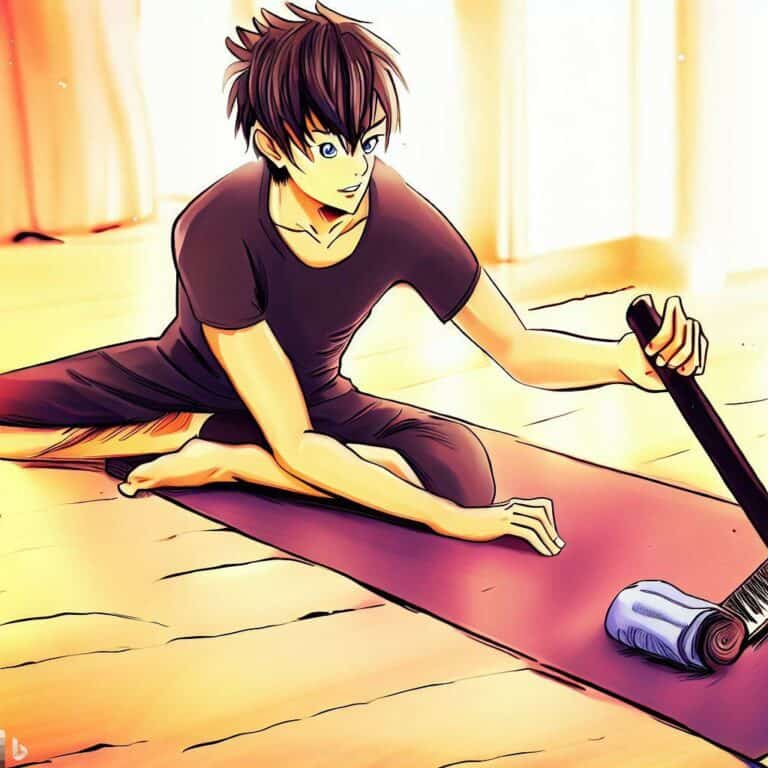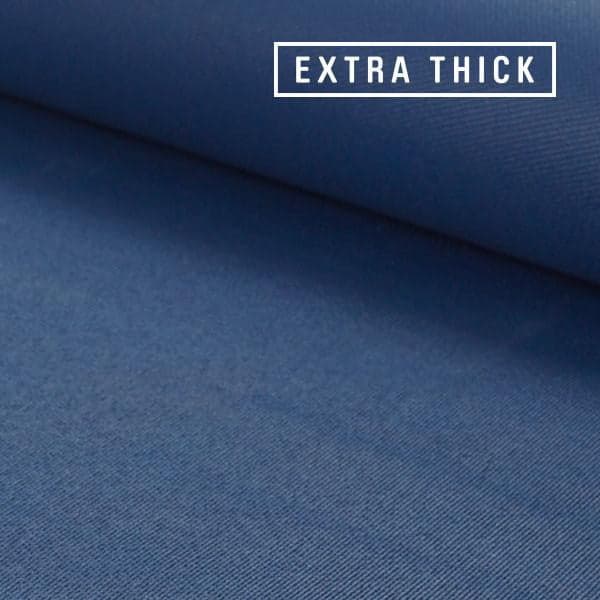Types of yoga blocks: Which one is right for you?
Introduction
Yoga practice has been around for thousands of years and has grown in popularity over the past decade. It is a great way to improve flexibility, balance, and strength while reducing stress. One of the tools yogis use to deepen their practice is yoga blocks.
Yoga blocks are rectangular props that help you modify or deepen your yoga postures. There are many different types of yoga blocks. They come in different sizes, shapes, and materials, which can affect their comfort and durability.
Using a yoga block can improve your alignment, provide stability during poses, or make challenging poses more accessible. In this article, we’ll explore the different types of yoga blocks and help you choose which one is right for you based on your level of experience, personal preference, and budget.
This article focuses on the choice of yoga block material. For those of you looking for the more comprehensive guide to choosing yoga blocks, I suggest this article Block by Block: A Comprehensive Guide to Choosing the Perfect Yoga Block.

- Yoga blocks are rectangular props used to modify or deepen yoga postures. They come in different sizes, shapes, and materials. The most common types of yoga blocks are foam, cork, wood, and bamboo.
- Foam blocks are lightweight, affordable, and versatile, making them ideal for beginners. Cork blocks are eco-friendly, sustainable, and durable, and are suitable for intermediate or advanced yogis who need more support in their practice.
- Wood blocks are recommended for experienced practitioners who prefer a more natural feel, while bamboo blocks are recommended for eco-conscious yogis who prefer sustainable materials.
Foam Blocks
Support, comfort, and versatility: the benefits of foam blocks
Foam blocks are one of the most popular props used in yoga practice. These lightweight and affordable tools can help you deepen your stretches, improve your alignment, and find more support in challenging poses. Foam blocks are made of soft materials that provide a cushioned surface for your hands, feet, or sit bones.
Unlike cork or wood blocks which have a harder surface, foam blocks have a little bit of give that can make them more comfortable to use. One of the key benefits of foam blocks is their versatility.
They can be used in many different ways to modify and adapt your practice to your needs. For example, if you have tight hips or hamstrings, you can use foam blocks to elevate the floor and make seated forward folds more accessible.
You can also use them to bring the floor closer to you in standing poses like Half Moon or Triangle pose. Foam blocks are especially useful for beginners who may not have as much flexibility or strength yet and need additional support to perform certain poses safely.
How to use foam blocks: Tips & Tricks
There are many ways to incorporate foam blocks into your yoga practice depending on what area of the body you want to focus on or what pose you want to modify. Here are some tips and tricks for using foam blocks:
– In seated postures such as Hero pose or Butterfly pose, place a block under each knee to provide support and reduce strain on the hips. – Place a block between your thighs during Bridge pose or Wheel pose for extra thigh activation.
– Use two foam blocks together at their highest height setting placed parallel against a wall for an assisted headstand position allowing less pressure on your neck. – Use a block as an extension of one arm in Triangle Pose: place it outside of your front foot parallel to the short end of the mat and rest your hand on top.
– In Half Pigeon Pose, place a foam block under your hip to create less pressure in the knee and provide better support for the upper body. Foam blocks can be a great addition to any yoga practice whether you’re a beginner or an advanced practitioner.
They offer many benefits, from improved alignment to increased comfort and support. Experiment with different ways of using foam blocks during your practice and discover how they can enhance your yoga experience.
Cork Blocks: Sturdy, Sustainable and Supportive
Cork blocks are another popular type of yoga block that has a lot of benefits for intermediate or advanced yoga practitioners. These blocks are made from natural cork material and provide a sturdy foundation for poses, making them perfect for those who need more support in their practice.
Cork is also an eco-friendlier option, as it is a sustainable and renewable resource. One of the great things about cork blocks is that they have a non-slip surface, which means they’ll stay in place during your practice even if you get sweaty.
They are also durable and long-lasting, so you won’t need to replace them often. Cork blocks aren’t as lightweight as foam blocks, but they provide firmer support due to their sturdiness.
How to Use Cork Blocks in Different Poses
There are several ways to use cork blocks in your practice. For example, if you’re working on your alignment in standing poses like triangle or half-moon pose, you can place a block under your hand or fingertips to help lengthen your spine and reach towards the ground with better balance.
In seated poses like forward folds or seated twists, cork blocks can be placed under the sit bones or hips to elevate the pelvis, making it easier to fold forward without rounding the back. Another way to use cork blocks is during inversions such as headstand or forearm stand where extra height can be helpful for supporting the body’s weight.
In these cases, you can stack two cork blocks on top of each other (or even three) and then place your head on top of them before lifting up into the pose. Overall, cork blocks offer many benefits for intermediate or advanced practitioners looking for supportive yoga props that will last long term while being kinder to our planet.
Wood Blocks
Nature’s Support: The Benefits of Wood Blocks
If you’re an experienced yogi who prefers a more natural feel, then wood blocks may be the perfect choice for you. Made from renewable materials such as bamboo or birch wood, these blocks are eco-friendly and offer a sense of connection with nature that cannot be replicated with synthetic materials.
Wood blocks also tend to be denser and sturdier than foam or cork blocks, which can provide a greater level of support during challenging poses. The natural texture and grip of the wood can also prevent slipping and sliding on sweaty hands, making them ideal for hot yoga classes.
How to Use Wood Blocks in Different Poses
One of the unique features of wood blocks is their versatility in use. They can be used similarly to foam or cork blocks in many poses, such as placing them under your hands in downward dog or between your thighs in bridge pose. However, because they are denser and heavier than other types of blocks, they can also offer support in more advanced poses like arm balances or inversions.
For example, if you’re working on handstand, you can place one block near the wall as a guide for where your hands should go while practicing against it. Or if you’re attempting flying pigeon pose, placing a block under your hip can help lift you higher and stabilize your balance.
Recommended for Experienced Practitioners Who Prefer a More Natural Feel
While wood blocks may not be ideal for beginners due to their weight and firmness, they are perfect for experienced practitioners who have developed proper alignment and strength in their practice. If you prefer a sustainable option that offers both durability and natural beauty, consider investing in a high-quality set of wood yoga blocks.
Remember that choosing the right yoga block depends on personal preference and individual needs. Experiment with different types and models to find the one that best supports your practice and enhances your yoga experience.
Bamboo Blocks
Whether you’re an eco-conscious yogi or simply prefer the look and feel of natural materials, bamboo blocks are an excellent option for your yoga practice. These blocks are made from bamboo, a fast-growing, renewable resource that is both durable and sustainable.
But what sets bamboo blocks apart from other types of yoga blocks? Let’s take a closer look.
Description of Bamboo Blocks and Their Benefits
Bamboo blocks are lightweight yet sturdy, making them easy to transport to and from your yoga class. They’re also moisture-resistant, which means they won’t absorb sweat or bacteria like foam or cork blocks can over time.
In addition to being eco-friendly, bamboo blocks have a smooth surface that feels comfortable against the skin. Bamboo has natural antibacterial properties that make it a great choice for those concerned about hygiene.
Bamboo is also hypoallergenic and doesn’t contain any harmful chemicals or toxins. If you have sensitive skin or allergies, using a bamboo block can be a great way to avoid irritation.
How to Use Bamboo Blocks in Different Poses
Bamboo blocks can be used in many of the same ways as foam and cork blocks. For example, you can use them to support your weight in standing poses like Triangle Pose (Trikonasana) or Half Moon Pose (Ardha Chandrasana). You can also use them to deepen stretches in seated poses like Forward Fold (Paschimottanasana) or Bound Angle Pose (Baddha Konasana).
One unique feature of bamboo blocks is their size. Some brands offer larger sizes than traditional foam or cork blocks, which can come in handy when you need more space for support in more advanced poses like King Pigeon Pose (Kapotasana).
Recommended for Eco-Conscious Yogis Who Prefer Sustainable Materials
If you’re looking for a yoga block that aligns with your values of sustainability and environmental responsibility, bamboo blocks are an excellent choice. Not only are they made from a renewable resource, but they’re also biodegradable and recyclable. In addition to being eco-friendly, bamboo blocks offer all the benefits of traditional yoga blocks.
They can help you deepen your practice, provide support where you need it, and make challenging poses more accessible. So if you’re in the market for a new yoga block, consider choosing bamboo – your practice (and the planet) will thank you!
Other Types of Yoga Blocks
Recycled Foam Blocks: A Sustainable Option
In recent years, more and more yoga practitioners have become conscious of their environmental impact. Recycled foam blocks are a great option for those who want to reduce their carbon footprint. These blocks are made from discarded foam materials, which are repurposed to create high-quality yoga blocks.
The texture and density of recycled foam blocks are similar to traditional foam blocks, making them an excellent choice for beginners or those who prefer softer support. One thing to keep in mind when using recycled foam blocks is that they may not be as durable as other types of yoga blocks.
However, with proper care and storage, they can still last for many years. If you’re looking for a sustainable option that doesn’t compromise on quality, consider giving recycled foam blocks a try.
Recycled Cork Blocks: Eco-Friendly and Supportive
Cork is a natural material that comes from the bark of cork oak trees. It’s renewable, biodegradable, and has excellent traction – making it the perfect material for yoga blocks! Recycled cork blocks are made by grinding up leftover cork pieces and reforming them into new block shapes.
One of the main advantages of cork over other materials is its firmness and stability – making it an ideal choice for advanced practitioners who require more challenging support. It also has antimicrobial properties that resist the growth of bacteria or mold caused by sweat or dirt buildup during your practice sessions – helping maintain healthiness hygiene practices.
While cork blocks tend to be pricier than traditional foam options, they’re well worth it in terms of longevity and eco-friendliness. If you’re passionate about sustainability or craving a firmer grip during your practice sessions – give recycled cork yoga block a try!

Conclusion: Choosing the Right Yoga Block for You
Choosing the right yoga block can make all the difference in your practice. Whether you’re a beginner or an experienced yogi, finding the right block can provide support and help with alignment in challenging poses. When choosing a yoga block, there are several factors to consider.
Factors to Consider:
Budget: Yoga blocks come in a wide range of prices, from inexpensive foam blocks to more expensive cork and wood blocks. Consider how often you plan on using your block and what features are important to you before deciding on a budget. Preference: Everyone’s body is different, so what works for one person may not work for another.
Think about what size, shape, and material you prefer when choosing a block. Level: Your level of experience should also be taken into consideration when choosing a yoga block.
Beginners may benefit from softer foam blocks while advanced practitioners may prefer harder wood or cork blocks. Finding the right yoga block is essential for anyone looking to enhance their practice.
With so many options available on the market today, it’s important to take into account your budget, personal preferences and skill level before making a decision. No matter which type of yoga block you choose, remember that it is just one tool in your practice and ultimately it’s up to you to find what works best for your body and needs.
You’ve got this! Happy practicing!
More reading?
This article is part of a series of articles on the topic of choosing the perfect yoga block. Other articles in this series include:






